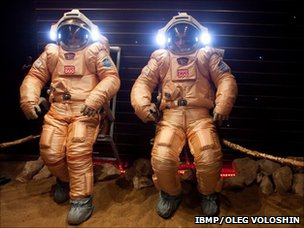rerevisionist wrote:Everything you say sounds like an attempt to evade the issue.
Not sure how you're getting that perception. If I wanted to "evade" the issue I wouldn't log in here. I'll attempt to address specific questions with specific answers. It would be helpful if further questions limit themselves to a smaller number of topics.
It's not just a "layman's perspective" - the astronauts had a bit of a vested interest in checking the thing would work. However, I'm grateful for your tacit implication that the equipment was never tested in a realistic way in a vacuum chamber.
I'm detecting the beginnings of an intellectually dishonest tact here. Your statement above
seems to me to be attempting to frame my answer in terms other than it was intended. In other words, I think you're twisting my answer. Please don't do that.
Systems engineering tests are not "all inclusive" but thorough, rigorous and methodical, leading to greater and greater complexity. If you study any kind of engineering you will find that the various criteria are tested separately for greater precision of results. Rather than wasting time trying to accurately replicate all possible conditions, test engineers will subject the tested item to the entire range of possibilities for one stress, then subject a relevant sample to the conditions of another stress.
It may not be how you would do things but that's how actual engineers do it.
The various components/criteria of the space suit were all tested on earth before being tested in low earth orbit LEO. Testing in LEO would be the most realistic test possible before putting a man on the moon in one. Further, Apollo 11 was, in actuality, a test flight. All the flown hardware had to be "man-rated" in hundreds of tests before use.
But you say nothing for example on air pressure/ oxygen supply and how a tiny backpack could deliver it.
Many of the statements in this thread indicate a general lack of information regarding the specifics of the space program. That's fine, we can't all be experts at everything. I'm sure you're an expert at things I don't know anything about. But we shouldn't draw conclusions from a lack of information. Two logical fallacies based on this technique are "argument from incredulity" and "argument from ignorance." In all cases, a logical fallacy invalidates an argument even if the underling facts are correct.
http://www.nizkor.org/features/fallacies/The volume inside the pressure suit was low, and the internal pressure of the suit was about 4psi of pure oxygen, rather than 14-15psi of nitrogen/oxygen mixture. This provides the same "partial pressure" of oxygen to drive the osmotic membranes in the lungs.
The wikipedia articles on the various parts of the A7L space suit and the Portable Life Support System (PLSS) pack are accurate but not very detailed. I will occasionally post links to wiki articles when I feel they provide a good overview. If the conversation warrants I will occasionally post links to more technical references.
http://en.wikipedia.org/wiki/Primary_Life_Support_Systemhttp://en.wikipedia.org/wiki/Apollo/Skylab_A7Lhttp://next.nasa.gov/alsj/plss.htmlThe oxygen bottle in the PLSS pack was pressurized to 1020psi for the early missions, 1430psi for later missions with longer EVA duration. Oxygen was released to the suit system with a pressure regulation of 3.7psi. Air in the suit was circulated by a fan in the PLSS, feeding into the helmet and pulling from the suit. This kept the most fresh and dry air in the helmet, minimizing the risk of fogging.
Nor how water vapour and CO2 would be removed. Nor how the temperature could be stabilised so the suit-wearer could survive.
I'll discuss these together as the hardware overlaps a bit.
The air circulated through passages of the sublimator plate in the PLSS, condensing out moisture. I give more detail on the PLSS contents below, but in short the sublimator plate is a cold thing that had air and water passages. The cool, dry air was then sent through a CO2 scrubber ( a canister of Lithium Hydroxide), then back into the suit.
http://en.wikipedia.org/wiki/Lithium_hydroxideTemperature regulation:
Water was pumped through a "Liquid Cooling Garment" (LCG), resembling long-john underwear with tubing on the surface. Body heat generated while working warms the water in the tubing. The water is pumped to the sublimator plate where it cools and is returned to the LCG. The flow rate was manually adjustable by the astronaut for comfort with some amount of automatic control for safety.
I recently read a tedious little publication titled "Automatic Control of Water Cooling In Space Suits" (ASIN b0007HRMLQ). The amount of heat generated by a human at various loads was analyzed, the amount of tubing required was tested, and the amount of delta-T (change in temp) required for comfort was studied. This test was done in the early 1960's using a modified scuba wet-suit with tubing and a bench-mounted chiller. One discovery was that the test subject would not realize how hot they were getting and then over-correct, leading to the need for some amount of automatic regulation.
You don't seem to realise the high temperatures that presumably obtain on the moon and objects intercepting the sun. It would make Death Valley feel like the Arctic.
Please don't presume to tell me what I do and do not know. I've done my homework. You do not appear to have done so.
There's a problem with the heat gradient, and removing excess heat, since there's no way to arrange e.g. a water operated heat exchanger. (There's also the problem of heating the thing up when in the shadow of rock).
The interior of the suit was heated by the astronaut. The amount of insulation built into the suit prevented any body heat from getting out, so the biggest danger was the astronaut overheating in the suit.
http://en.wikipedia.org/wiki/Thermal_Micrometeoroid_GarmentI've run the numbers on this in the past, and there's a point in the multi-layer insulation that is heated by neither the astronaut nor the sun. The heat from both sides is reflected back by the aluminized mylar. The gloves did not have the same number of layers, and astronauts reported that they could feel things like cold rocks -- not to the point of discomfort but noticeable.
Now, about the heat exchanger:
The sublimator plate used something like evaporative cooling. Water from a feedwater tank in the PLSS was fed into a layer of the sublimator that was made with sintered metal (chunks or shavings pressed until they stick together). This was a porous layer, so water could leak out to the surface of the plate. There, it was exposed to vacuum where the water would "boil" immediately, as the vapor pressure of liquid water is much greater than the pressure of the moon's barely measurable atmosphere. The act of "boiling" in vacuum draws heat away from the water, so the water in the pores of the plate froze.
http://www.youtube.com/watch?v=pOYgdQp4eucAs stated above, the LCG water and the suit atmosphere are cycled through portions of the sublimator plate. These passages are closed/sealed and not exposed to vacuum, but the metal is in thermal conduction contact with the porous plate. The warm air and water heat the metal. As the heat is transferred to the ice, the ice sublimates (turns to vapor without passing through liquid phase). The latent heat of sublimation is the same as both the latent heat of melting AND evaporation, -677.0 cal/g, -2,830,000 J/kg
http://www.theweatherprediction.com/habyhints2/524/ This is in addition to the question of whether the parts of the suit at near earth atmospheric pressure - gloves are a favourite example - could allow fairly free movement.
This is how I know you haven't done your homework. The suit was pressurized to less than 4psi, less than 1/3 earth atmospheric pressure. The pressure garment had bellows-like "constant volume" joints that allowed bending without compressing the air.
The technology for space suits was developed from the technology for high-altitude flight suits. Research on these issues started in 1919.
Incidentally my 8 hour suggestion was obviously just a handy length of time for a demonstration. A full simulation would need several days, including, presumably, pressurising their moon lander craft to allow removal of parts of the suit.
Apollo 9 mission objectives included testing the entire spacesuit/PLSS system in orbit during EVA.
{edit - fix quote tags}

